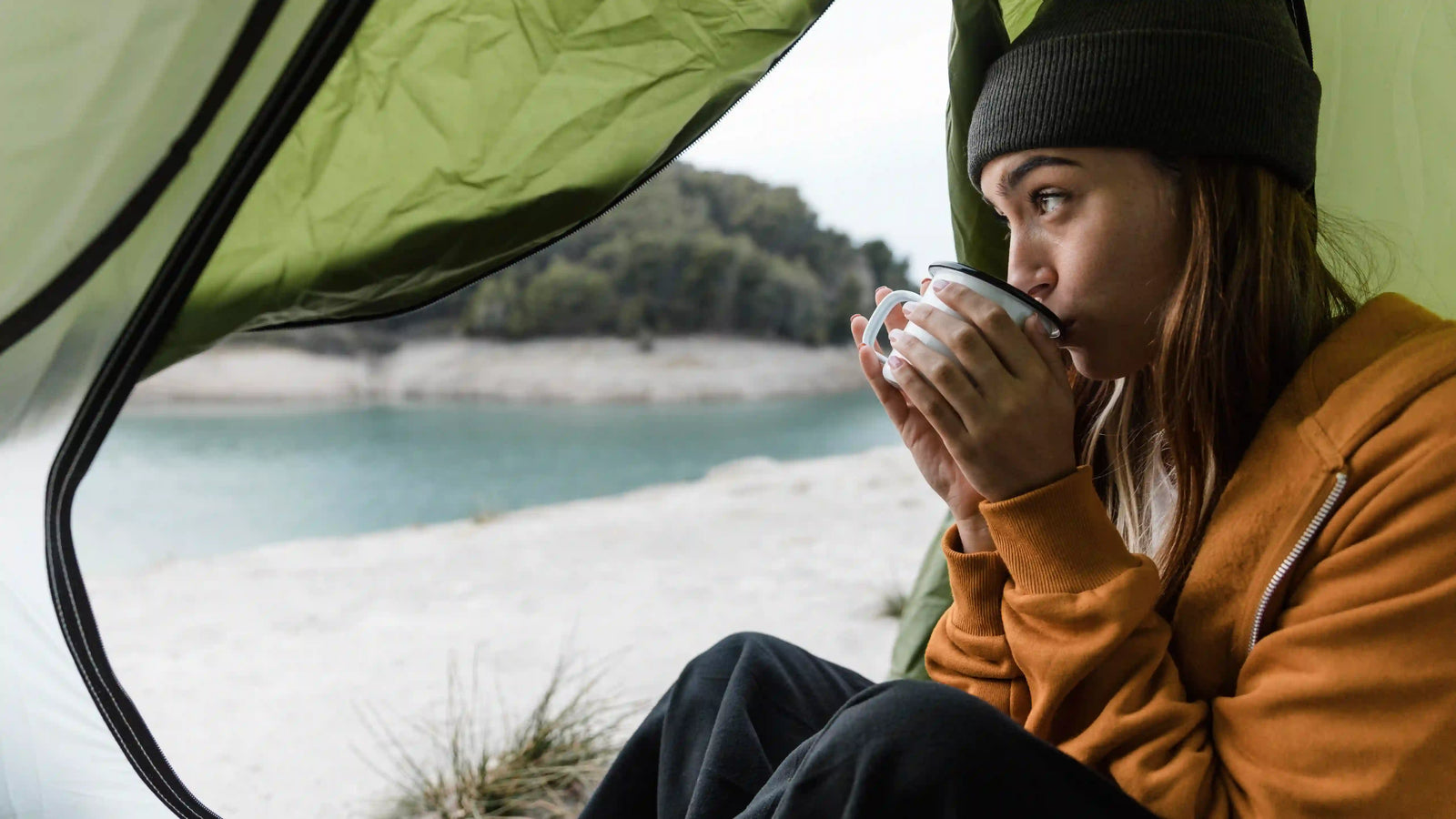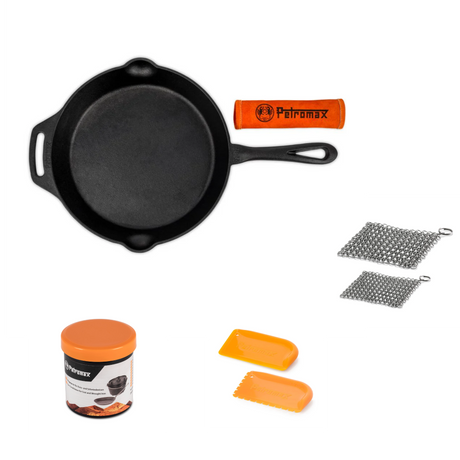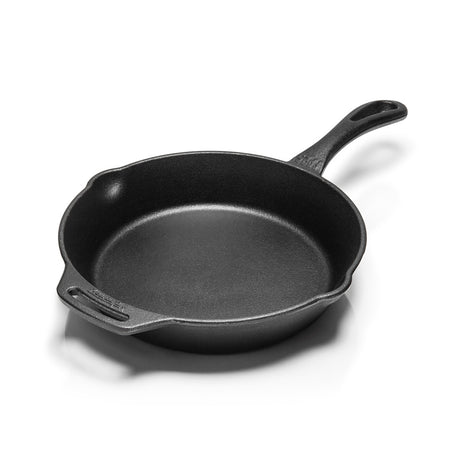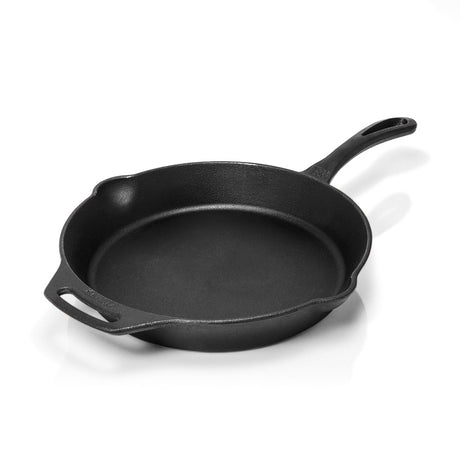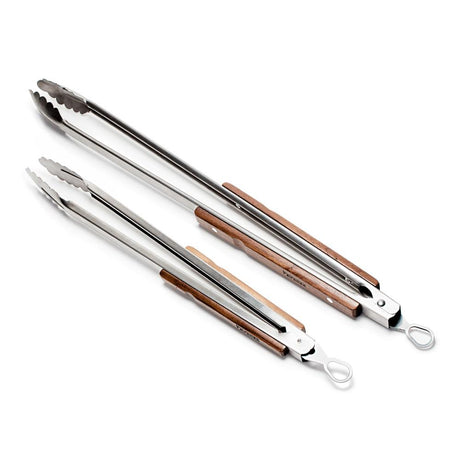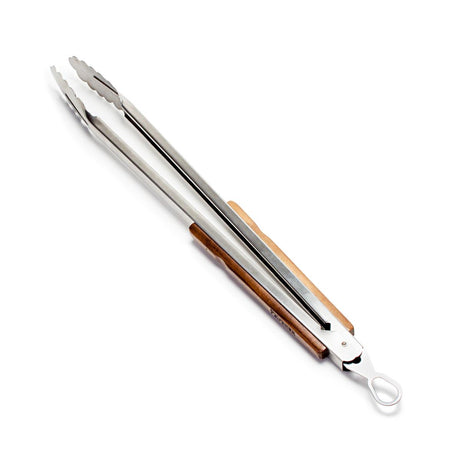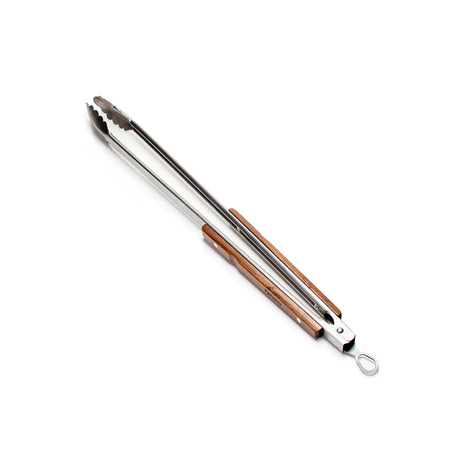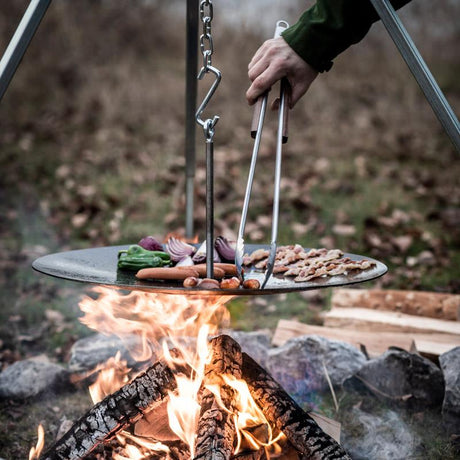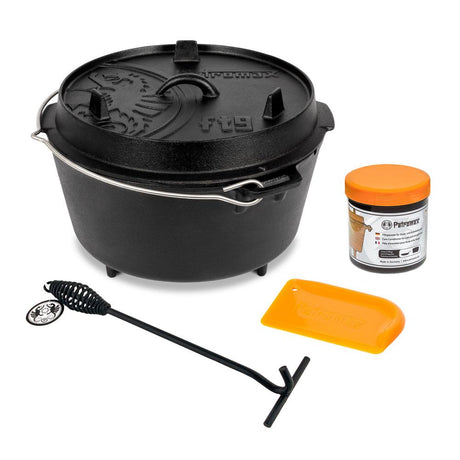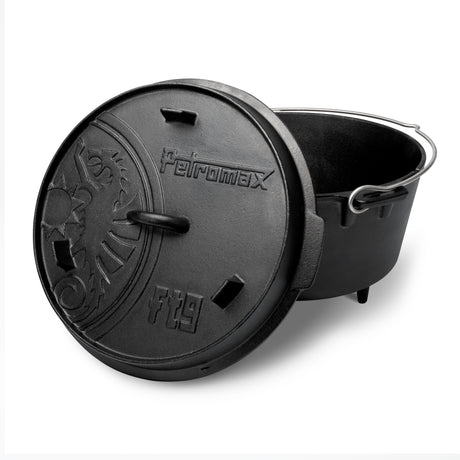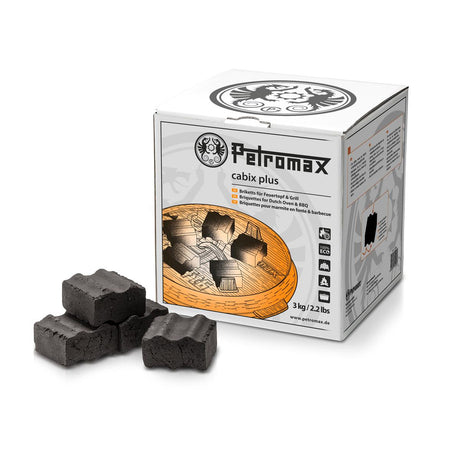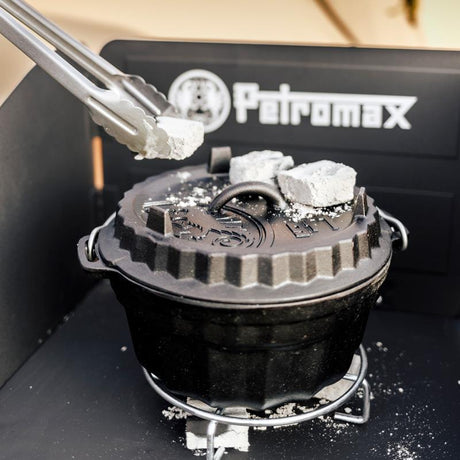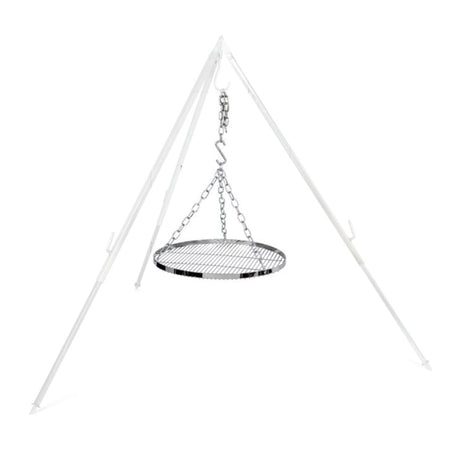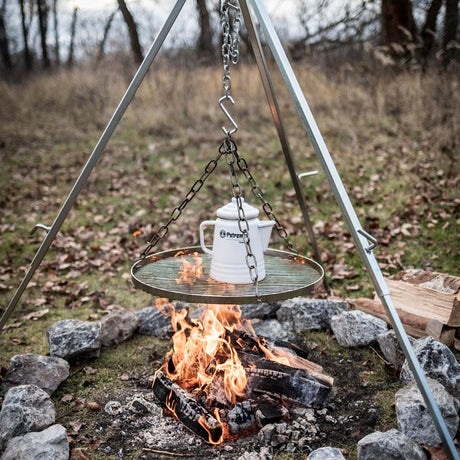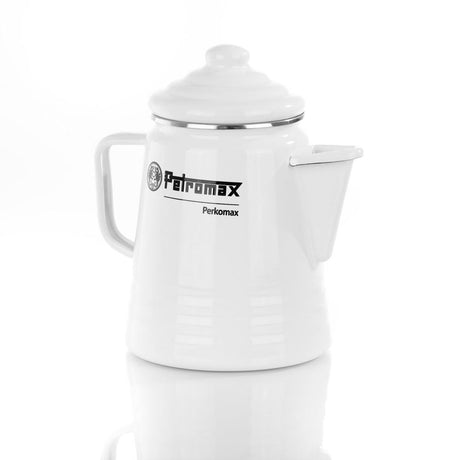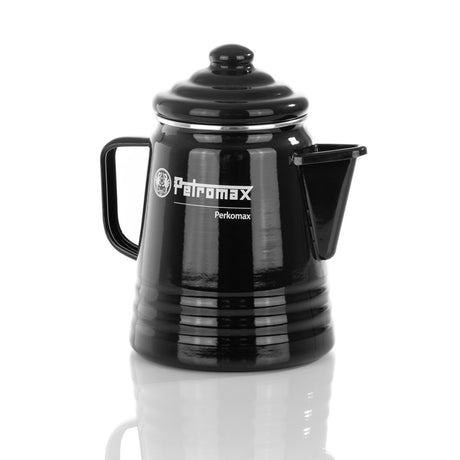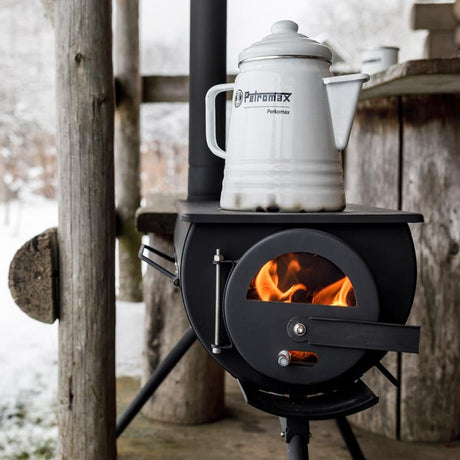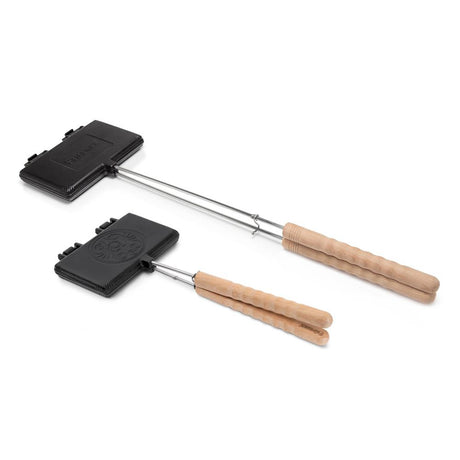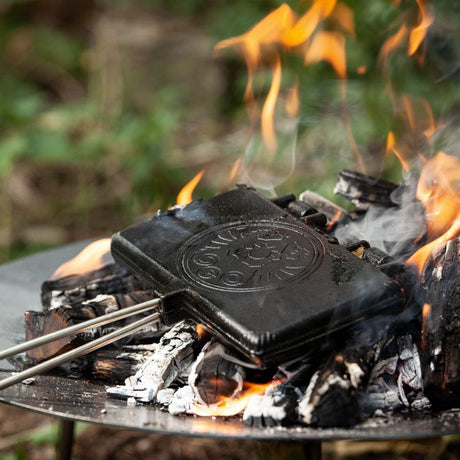For many, camping in the cold sounds like a tough challenge at first - but that's exactly what makes it so appealing. Fresh air, snow-covered landscapes and the tranquillity of nature make winter camping a special experience. To make sure you don't freeze at night and your adventure stays cozy, we have collected the best tips here. From the right tent and warm sleeping bag to useful tricks for cold nights: find out how to prepare perfectly here.
Table of contents
Which tent is best for camping in winter?
How does the right sleeping bag protect you from the cold when camping?
Which sleeping pad insulates best against the cold from below?
How can additional warmth be generated in the tent?
What clothing and equipment keeps you warm when camping?
What other tips and tricks help when camping in the cold?
Key points summarized
Which tent is best for camping in winter?
When camping in winter, you can't just take any tent. A typical summer model will cause you problems in snowfall or strong winds at the latest. A tent for winter should be stable, weatherproof and prepared for extreme conditions. It is particularly important that it can withstand wind and snow loads. Sturdy poles and a robust tarpaulin are a must, otherwise you run the risk of the roof collapsing over your head.
Ventilation should not be underestimated either. Cold is one thing, but condensation is just as unpleasant. That's why your tent should definitely have ventilation flaps so that moist air can escape.
Important criteria for your winter tent:
-
Wind stability: snow and icy winds put a lot of strain on the material. Look for a tent with robust poles.
-
Snow load resistance: A tapered roof prevents snow from accumulating.
- Ventilation: Even in winter you need to avoid condensation - good ventilation flaps are a must.
Tent types at a glance:
There are different types of tents that are suitable for winter camping. Dome tents are flexible, quick to pitch and a solid choice in snowy conditions. Tunnel tents offer plenty of space, but are more susceptible to wind and therefore need to be well guyed. If you are traveling in extreme conditions, a geodesic tent is the best choice - these structures are specially designed to withstand strong wind and snow.
-
Dome tent: flexible and quick to pitch, good in snow.
-
Tunnel tent: offers plenty of space, but needs to be pitched out of the wind.
- Geodesic tent: extremely stable, perfect for really cold nights.
👉 Tip: It's better to choose a smaller tent that you can heat up more quickly with your body heat. A huge tent may seem cozy, but it takes much longer to get warm inside. If you want to be on the safe side when camping in winter, invest in a proper winter tent - with snow flaps, reinforced lines and a construction that reliably protects you.
How does the right sleeping bag protect you from the cold when camping?
When it gets freezing cold at night, your sleeping bag is your best friend. But beware: not every sleeping bag is automatically suitable for winter. It is important to look at the temperature information, which shows you up to what degree you will really stay warm. The comfort temperature indicates the temperature up to which you can sleep comfortably. The limit temperature means that it is already getting chilly, but you can still stand it. And the extreme temperature? This is really only an emergency temperature - you can survive in this range, but it's certainly not comfortable.
Fillings in comparison:
Then the question arises: down or synthetic fiber? Down sleeping bags offer unbeatable warmth with a very low weight and small pack size. Perfect when it's dry and icy outside. Synthetic fiber sleeping bags, on the other hand, are more robust in damp conditions, somewhat easier to care for and often cheaper - but somewhat heavier and bulkier.
- Down: light, very warm, small pack size. Ideal for dry, cold conditions.
- Synthetic fiber: less sensitive to moisture, but somewhat heavier.
A mummy sleeping bag is particularly worthwhile in winter. It fits close to the body, encloses the head area with a hood and thus ensures that as little heat as possible escapes. If you also want more warmth, use a ticking: this is like a thin inner sleeping bag that provides a few extra degrees and also protects the sleeping bag from dirt.
Practical tips for more warmth:
To keep your sleeping bag warm for a long time, you should take good care of it. Air it out after every night and store it loosely spread out at home, not permanently in a tight stuff sack. Otherwise the filling will lose its fluffiness - and therefore also its warmth.
If you're wondering which is the best sleeping bag for you, look carefully at the temperature information and think about how cold it really gets at your destination. This will help you find the sleeping bag that will keep you warm - whether it's just below zero outside or deep in the minus range.
Which sleeping pad insulates best against the cold from below?
Many people underestimate it: it's not the air temperature alone that is your biggest enemy when winter camping, but the cold from below. The ground mercilessly draws the heat out of your body if you don't insulate yourself properly. That's why a good sleeping mat is just as important as a sleeping bag.
R-value explained:
The most important keyword is: R-value. It indicates how well a sleeping pad insulates. The higher the R-value, the better the mat keeps the cold away from the ground. For winter camping, you should look for a value of at least 4 or higher so that you really stay warm.
Which sleeping pad is right for you? There are three main types:
-
Foam mat: light and robust, good base but less comfortable.
-
Self-inflating mat: insulates well, more comfortable than foam.
- Inflatable mat with down or foam filling: top insulation, ideal for winter camping.
Incidentally, many winter campers opt for a combination of two mats: a simple foam mat at the bottom as a robust barrier and an air mat on top for comfort. This gives you double protection against the cold ground.
How can additional warmth be generated in the tent?
Even with the perfect sleeping system, there is sometimes a need for a little extra warmth in the tent. Fortunately, there are some simple and safe ways to do this.
Safe heat sources in the tent:
A tent heater can be handy - but please don't get reckless. Only use models that are specifically designed for tents and always ensure adequate ventilation. Carbon monoxide is an invisible danger!
The hot water bottle is much less complicated. A classic that never goes out of fashion: fill it with hot water and place it in your sleeping bag before going to bed. At night, you can put it on your feet and be really cozy.
Your own body heat is also an underestimated source. If you move briefly before going to bed - e.g. do a few squats - you heat up your body and start the night warm. Incidentally, thick clothing in a sleeping bag is counterproductive as it hinders heat conduction. Better: one or two functional layers that store heat from the inside.
👉 Find suitable outdoor heat sources here !
Other tricks:
- Place warming stones in the fire, allow to cool briefly and then bring them into the awning.
- Hot drinks before going to bed.
- A fixed routine: air the tent, organize your equipment, prepare a hot water bottle - this is how you start the night warm.
What clothes and equipment keep you warm when camping?
If you want to stay warm when camping, there is no way around the onion principle. Several thin layers are better than one thick layer because small air pockets form between them, which store the heat.
The onion principle:
The first layer is always underwear - breathable and moisture-regulating so that you don't cool down in your own sweat. A warming mid-layer such as fleece or wool is placed on top. The final layer is a wind- and water-repellent outer layer that protects you from snow, drizzle and icy winds.
- Underwear: breathable and moisture-regulating.
- Mid-layer: fleece or wool for warmth.
- Outer layer: wind and water repellent.
Other equipment to keep you warm:
Even the little things make a difference: a hood keeps a lot of warmth close to your body, and a sleeping bag liner can provide you with crucial extra warmth. You should always have warm socks and gloves to hand, even at night.
- Hood: retains a lot of warmth.
- Ticking: increases the warmth in the sleeping bag.
- Warm socks and gloves: also important at night.
👉 Important: A little rule of thumb: don't dress too thickly in your sleeping bag. Your sleeping bag works best when your body heat heats up the filling - too many layers can prevent this. It's better to wear light, breathable clothing to get the most out of your sleeping bag.
What other tips and tricks help when camping in the cold?
Now you know the basics, but there are a few more useful tips and tricks that will make your winter camping much more pleasant:
- Pitch your tent so that it is sheltered from the wind - preferably behind trees or hills.
- For misted tents: ventilate regularly.
- Frozen equipment? Put it in your sleeping bag - it will slowly thaw out there.
- Warm meals give you energy and warm you up from the inside.
👉 You can find more interesting tips here: Camping in winter
👉 Also take a look at how to interpret weather signs correctly can be worth its weight in gold outdoors.
👉 And for hot meals, it's worth taking a look at our ideas for outdoor cooking
Key points to summarize
If you want to stay warm when camping in winter, it's all about the right preparation:
- Choose a sturdy tent that can withstand snow loads.
- Use a combination of a warm sleeping bag and an insulating sleeping mat.
- Use additional heat sources such as hot water bottles or safe heaters.
- Make sure you have the right clothing according to the onion principle.
- Prepare yourself mentally and practically for the cold nights - from choosing your campsite to planning your meals.
That way, you'll be well equipped to enjoy the special atmosphere of winter camping - without freezing.
